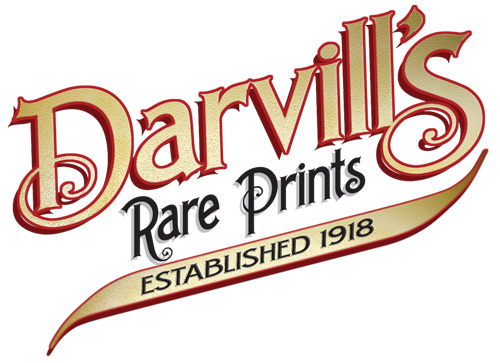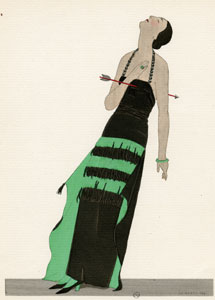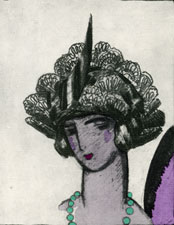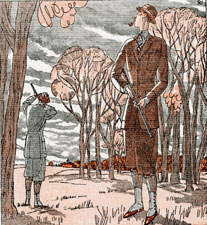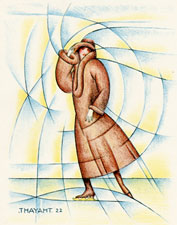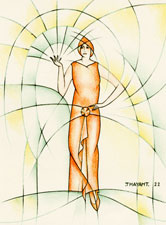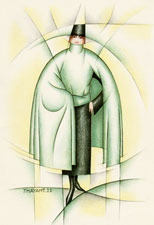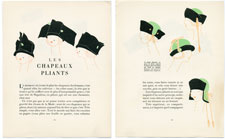|
|||
|---|---|---|---|
Gazette du Bon Ton (1912-1925)
|
|||
| Guaranteed authentic 85+ year old Gazette du Bon Ton prints from 1922. We do not sell reproductions. | |||
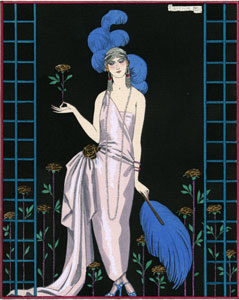 La Roseraie by Barbier Robe Du Soir, de Worth 1922 (Pochoir)  |
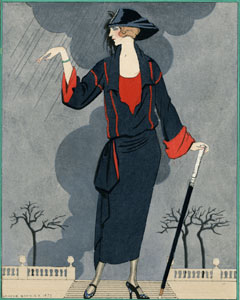 L'Averse Intempestive by Barbier Robe pour la Cote D'Azur, de Worth 1922 (Pochoir)  |
|
|
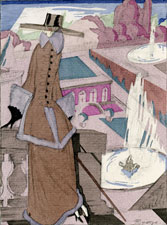 La Petite Mademoiselle by Pierre Mourgue (1922)  |
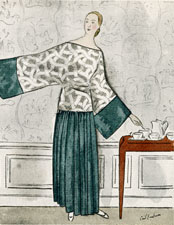 "Combien de morceaux de sucre?" by Erikson (1922)  |
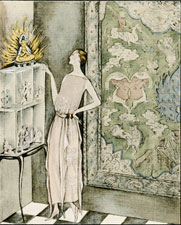 Les Bibelots de la Chine by Zenker (1922)  |
|
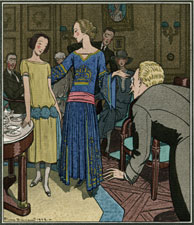 Vous étiez haute comme ça by Pierre Brissaud (1922)  |
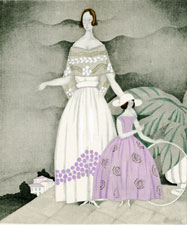 La Rose du Jardin by Charles Martin (1922)  |
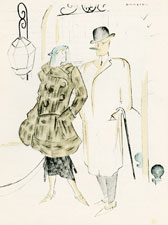 "Américains" Untitled illustration from article titled "Américaines" by Gérard Bauer included are 4 pages with text, 2 smaller illustrations and the single page illustration above by Chastel (1922)  |
|
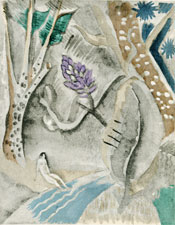 untitled single page illustration (Eve in the Garden of Eden) [Illustration from "Adam ou la bonne Volonté" by Marcel Astruc. 4 pages total with 2 smaller illustrations, the short story, and the single page illustration above] (1922)  |
|
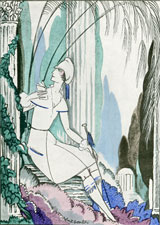 Le Chapiteau Corinthien by Robert Bonfils (1922)  |
|
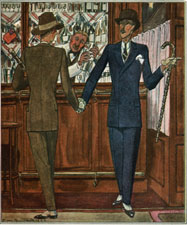 Neuf heures...il faut que je rentre diner by Pierre Brissaud  |
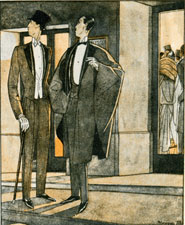 La soirée au théatre by Pierre Mourgue (text and illustration on back, comes with 4 pages total)  |
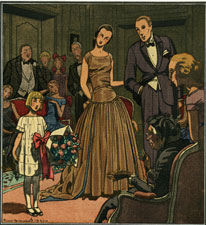 La Sainte-Claire Robe de Diner, de Jeanne Lanvin by Pierre Brissaud  |
|
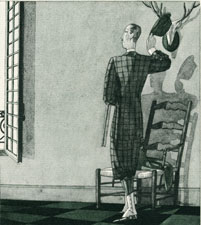 Nemrod, ou Le départ pour la chasse by Pierre Mourgue (text and illustration on back, comes with 4 pages total)  |
 |
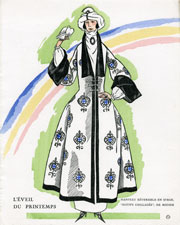 L'éveil du Printemps (Planche 17 - 1922)  |
|
|
|
|
|
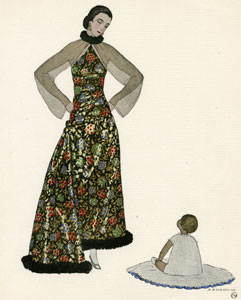 Un Admirateur Sincère by Marty Robe du Soir, de Paul Poiret 1922 (Pochoir)  |
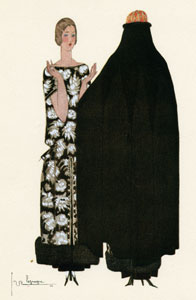 La Cape Admirable by Lepape Robe et Manteau, pour L'Après-Midi, de Martial et Armand 1922 (Pochoir)  |
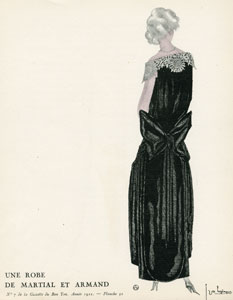 Une Robe de Martial et Armand by Lepape 1922 (Pochoir)  |
|
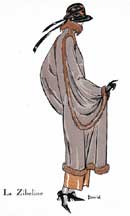 Le Zibeline by David 1922 Croquis (pochoir)  |
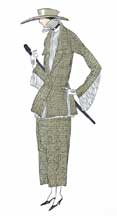 Croquis XXIX 1922 (pochoir)  |
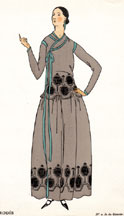 Fils tirés brodés sur transparent 1922 (pochoir)  |
|
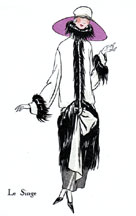 Le Singe 1922 (pochoir)  |
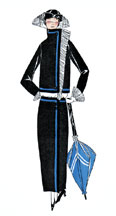 Croquis XXVIII 1922 (pochoir)  |
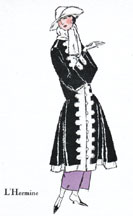 L'Hermine 1922 (pochoir)  |
|
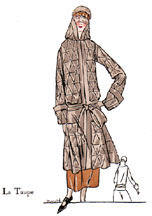 La Taupe by David 1922 Croquis (pochoir)  |
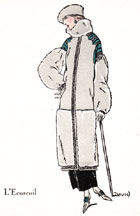 L'Ecureuil by David 1922 Croquis (pochoir)  |
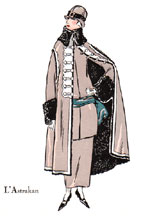 L'Astrakan 1922 Croquis (pochoir)  |
|
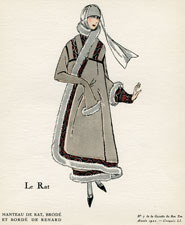 Le Rat Manteau de Rat, Brodé et Bordé de Renard 1922 Croquis (pochoir)  |
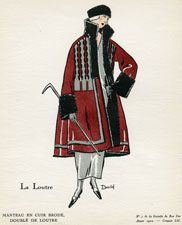 La Loutre Manteau en cuir Brodé, doublé de Loutre 1922 Croquis by David (pochoir)  |
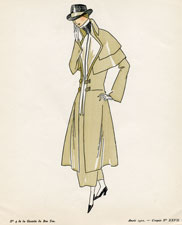 1922 Croquis No. XXVII (pochoir)  |
|
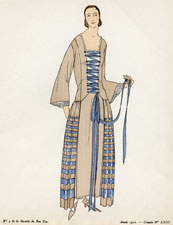 1922 Croquis No. XXIII (pochoir)  (faint crease upper right) |
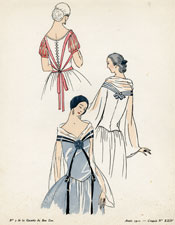 1922 Croquis No. XXIV (pochoir)  (light foxing margins) |
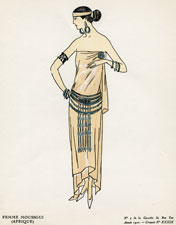 Femme Moussgui (Afrique) 1922 Croquis No. XXXIX (pochoir)  |
|
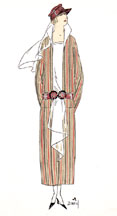 Croquis XXX by David 1922 (pochoir)  |
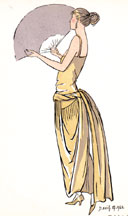 Époque 1887 by David 1922 (pochoir)  |
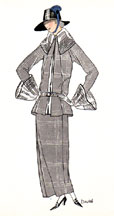 Croquis XXXI by David 1922 (pochoir)  |
|
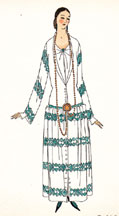 Serge Hindoue 1922 (pochoir)  |
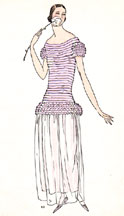 Croquis XVIII 1922 (pochoir)  |
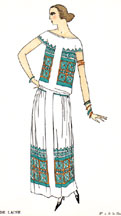 Broderie de Laine Sur Kasha 1922 (pochoir)  |
|
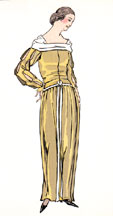 Renaissance Italienne 1922 (pochoir)  |
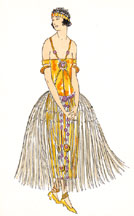 Femme Amaguilla (Afrique) 1922 (pochoir)  |
||
| The croquis (first sketches) below have fashion illustrations on the opposite side of the paper and employ chiefly offset "letterpress" printing rather than pochoir (stenciled) color. |
|||
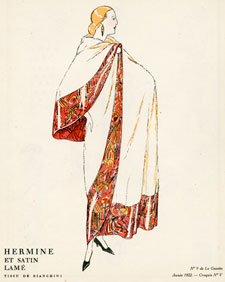 Hermine et Satin Lamé 1922  |
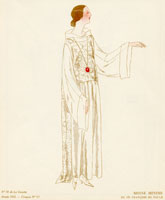 Moine Minime 1922  |
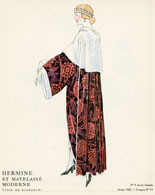 Hermine et Matelassé Moderne 1922  |
|
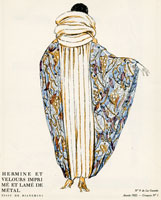 Hermine et Velours Imprimé et Lamé de Métal 1922  |
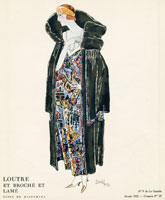 Loutre et Broché et Lamé 1922 (by David)  |
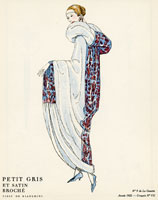 Petit Gris et Satin Broché 1922  |
|
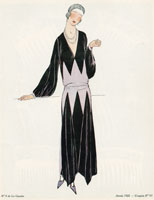 Croquis No. VI Gazette 8, 1922  |
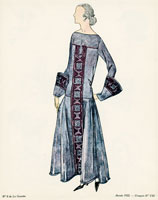 Croquis No. VIII Gazette 8, 1922  |
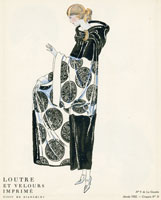 Hermine et Velours Imprimé Croquis No. II Gazette 9, 1922  |
|
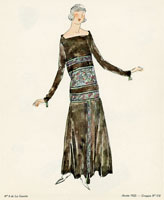 Croquis No. VII Gazette 9, 1922  |
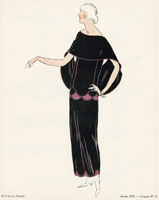 Croquis No. II Gazette 8, 1922  |
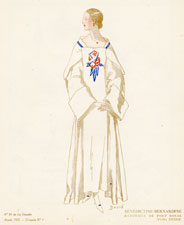 Bénédictine-Bernardine Réformée de Port Royal (XVIIIe Siècle) Croquis No. I by David Gazette 10, 1922  |
|
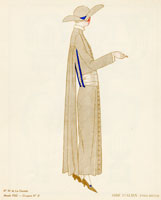 Abbé Italien (XVIIIe Siècle) Croquis No. II Gazette 10, 1922  |
 Soeur Bénédictine de Rome (XVIIIe Siècle) (Costume de Veuve) Croquis No. VII by David Gazette 10, 1922  |
 Chartreux (Robe de Maison) Croquis No. VIII Gazette 10, 1922  |
|
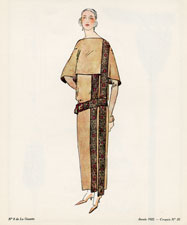 Gazette 8, Croquis No. III 1922  |
|
|
|
